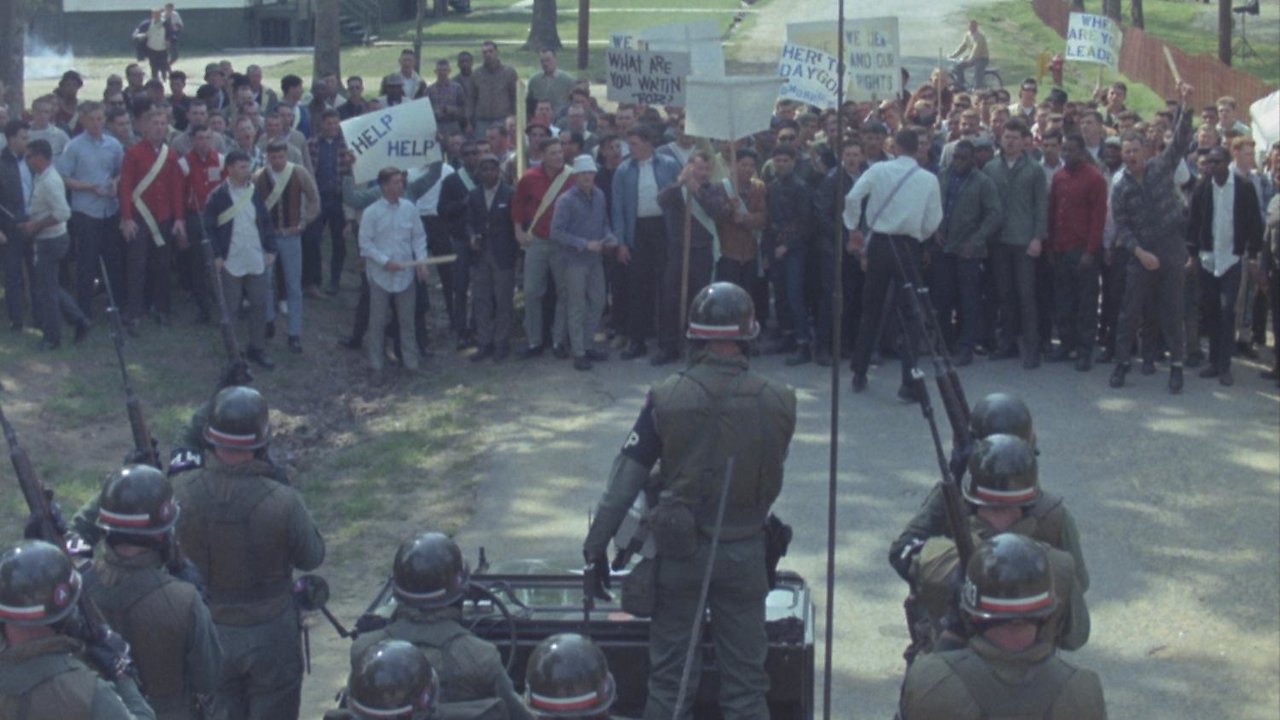-
Genres
-
CastCharlene ModesteLyndon B. JohnsonOtto Kerner
-
DirectorSierra Pettengill
-
Release Date2022
-
Runtime1 hr 31 min
-
LanguageEnglish
-
IMDB Rating6.7 (410)
-
Metascore82

Riotsville, U.S.A. is a 2022 documentary film that provides a chilling and thought-provoking examination of a time in American history where civil unrest and systemic inequality collided with increasingly militaristic law enforcement tactics. The documentary is directed by Sierra Pettengill, known for her work on historical films that challenge viewers to engage critically with the past. Rather than featuring actors, the film's narrative is constructed from archival footage, which features public figures of the time, such as President Lyndon B. Johnson and Governor Otto Kerner.
The title "Riotsville, U.S.A." refers to a mock-up town created by the U.S. military during the late 1960s. Riotsville was built on military bases as a training ground for soldiers and police forces to prepare for and learn how to respond to civil disorder and urban uprisings. This simulation of a typical American town, where scripted riots would play out, was a reaction to the real-life unrest occurring in cities across America. These upheavals were manifestations of deep-seated racial and socioeconomic disparities coming to a head during a tumultuous period marked by civil rights struggles, anti-war protests, and the quest for social justice.
While the film does not center around a single protagonist, it does prominently feature the voices of key historical figures, such as Charlene Modeste—an activist and commentator whose insights help provide context and analysis. Modeste's perspectives, along with those from other cultural and political analysts of the era, offer a multifaceted look into the causes and consequences of the riots and government responses.
Footage of President Johnson and Governor Kerner serves to anchor the political and legislative aspects of the era. Lyndon B. Johnson, who was President during the peak years of the civil rights movement, commissioned the Kerner Report—an investigation headed by Governor Otto Kerner aimed at understanding the causes of the 1967 race riots and providing recommendations for the future. The documentary scrutinizes the dual approach of the government—calling for social reform on one hand while preparing for aggressive containment and control of civil disturbances on the other.
Riotsville, U.S.A. deftly uses its found footage to detail the formation and objectives of these military-style training scenarios. The film reveals the country's nervous pulse as the federal government channeled considerable resources and energy into training and equipping local police with tactics and weaponry suited to a battlefield rather than community policing. The implication was clear: the state perceived its civilians, particularly those in African American communities who were most often in open conflict with the authorities, as potential enemies requiring suppression.
The documentary also looks beyond the specifics of the Riotsville exercises themselves and considers their wider implications and legacy. It examines media representations of the unrest, showing how the portrayal of riots in press and television shaped public perceptions and fears. Transparency about editorial choices and the motivations behind certain narratives becomes a key talking point, as the film scrutinizes the role media played in potentially exacerbating tensions and bolstering support for heavy-handed policing and surveillance.
Riotsville, U.S.A. is particularly powerful because it does not merely recount events; it makes a point to connect these historical lessons to contemporary issues. The viewer is prompted to draw parallels between the past and the present, as today's headlines continue to be dominated by concerns over policing, systemic racism, and the lingering question of how a society should deal with civil disobedience and voices of dissent. While remaining studiously non-partisan, the documentary urges an examination of the cyclical nature of social conflict and the ways in which state power is exerted over marginalized populations.
Furthermore, the film explores the human cost of the unrest and the responses thereto, highlighting stories of communities that bore the brunt of the militarized policing efforts. By sifting through a combination of testimonies, governmental statements, and media coverage, Riotsville, U.S.A. confronts viewers with the reality of fear and despair felt by citizens on the receiving end of such methods.
With its meticulous editing and carefully curated sequences, Riotsville, U.S.A. becomes more than a historical documentary. It stands as a reflective mirror, a stark critique of past practices, and an urgent inquiry into current and future statecraft. It questions not only the decisions made in moments of crisis but also the underlying systems and ideologies that necessitate or excuse these decisions. The film leaves the audience to contemplate the long-term consequences of choosing force over dialogue and oppression over understanding in the pursuit of societal order and harmony.
Riotsville, U.S.A. is a 2022 documentary with a runtime of 1 hour and 31 minutes. It has received mostly positive reviews from critics and viewers, who have given it an IMDb score of 6.7 and a MetaScore of 82.
